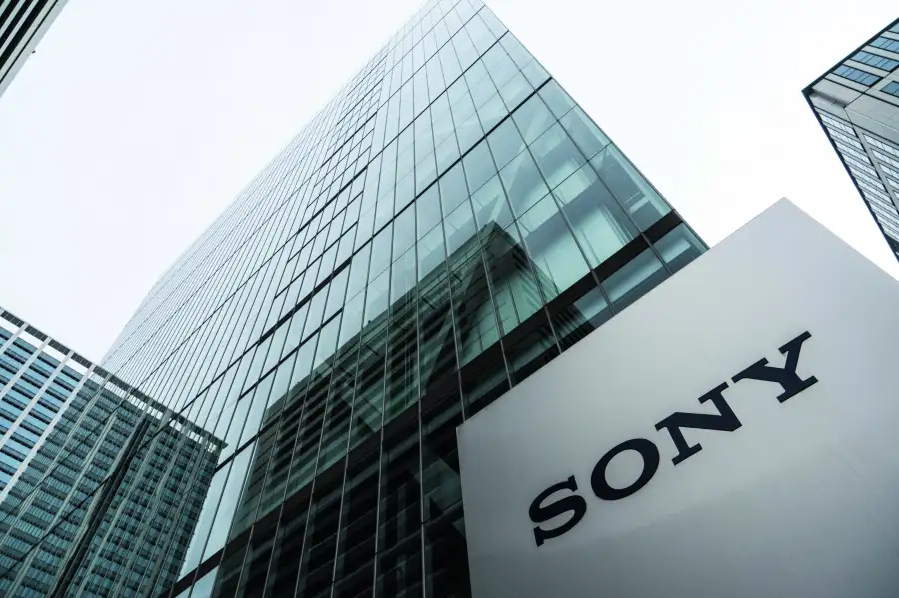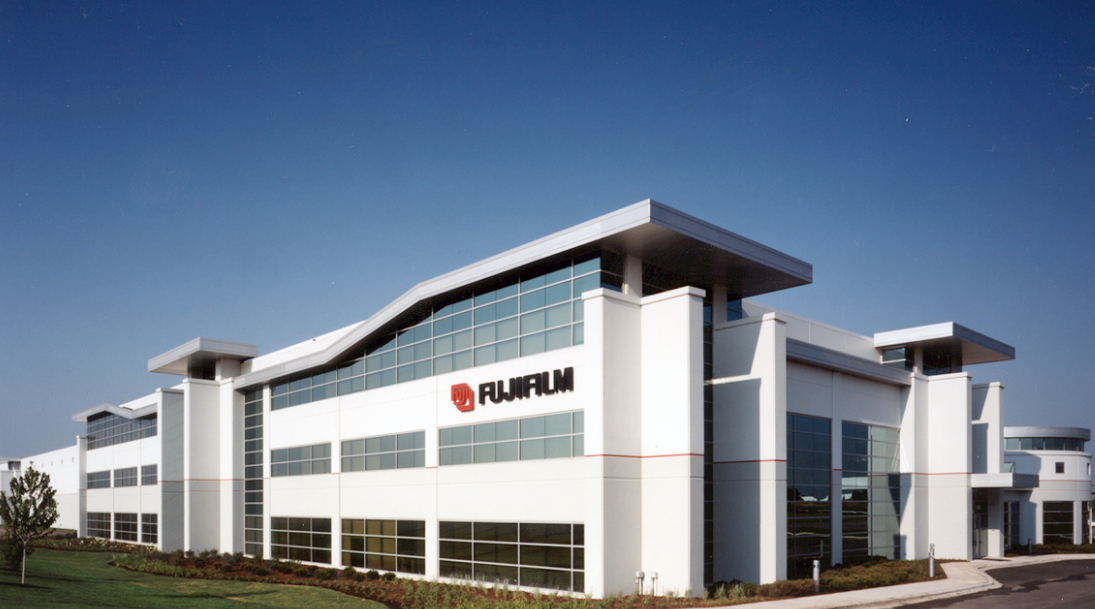19 TOP CAMERA BRANDS IN 2025:Which one do you like?
Friday 10 May 2024
 88.8k
88.8k
 Reproduction without the author's authorization is prohibited
Reproduction without the author's authorization is prohibited
I have introduced some famous Point And Shoot Film Cameras in my previous blog, most of them were products from the 1980s to 1990s. What’s shocking is that some of these camera brands are still very influential in 2025. You must have heard of their names, let’s see if there are any brands you like.
There are numerous camera brands available worldwide, and the exact number can vary as new companies emerge and others may cease operations. However, some of the most recognized camera brands include:
Canon

Image Source:Wikipedia
Canon’s history began in 1933 with the establishment of Precision Optical Instruments Laboratory in Japan. The company was founded by Takeshi Mitarai, Goro Yoshida, Saburo Uchida, and Takeo Maeda. Initially, they did not have the facilities to produce their own optical glass, and their first cameras incorporated Nikkor lenses from Nippon Kogaku K.K. (later Nikon Corporation). In 1934, they produced the Kwanon, a prototype for Japan’s first-ever 35 mm camera with a focal-plane-based shutter. The company name was changed to Canon Camera Co., Inc., in 1947, and then shortened to Canon Inc. in 1969.
Today, Canon is a multinational corporation headquartered in Ōta, Tokyo, specializing in optical, imaging, and industrial products, such as lenses, cameras, medical equipment, scanners, printers, and semiconductor manufacturing equipment. As of 2022, Canon reported revenues of ¥4.03 trillion (US$30.31 billion), with a net income of ¥352.4 billion (US$2.65 billion). The company employs over 184,000 people worldwide and continues to be a major player in the electronics industry, listed on the Tokyo Stock Exchange and a constituent of the TOPIX Core 30 and Nikkei 225 indexes.
For the latest financial results, Canon reported its 1st Quarter results on April 24, 2024, which are available on their global website. Canon remains committed to innovation and excellence in its field, with ongoing strategies and developments across various business segments including printing, medical, imaging, and industrial sectors.
Nikon

Image Source:Wikipedia
Nikon’s history dates back to July 25, 1917, when it was founded as Nippon Kogaku K.K. (Japan Optical Industries Co., Ltd.). The company initially specialized in the production of optics and lenses, and it quickly established a reputation for precision engineering and high-quality products. Nikon’s first major products included ultra-small-prism binoculars and microscopes, and they were also known for inviting German engineers to Japan to boost their optical capabilities.
In 1988, the company was renamed Nikon Corporation, after its cameras, becoming a well-known brand in the photography industry. Nikon has been a pioneer in many areas, including the development of the first digital SLR cameras. The company’s product lines have included the Nikkor imaging lenses, the Nikon F-series of 35 mm film SLR cameras, the Nikon D-series of digital SLR cameras, and the Nikon Z-series of digital mirrorless cameras.
As of 2024, Nikon continues to be a leader in the optics and photographic equipment industry. The company has diversified into new areas like 3D printing and regenerative medicine to adapt to the changing market. Nikon’s current product lineup includes imaging products, precision equipment, healthcare business, components business, and digital manufacturing business. Nikon is also listed on the Tokyo Stock Exchange and is part of the Mitsubishi group of companies (keiretsu).
On March 7, 2024, Nikon announced its acquisition of Red Digital Cinema, which indicates the company’s ongoing commitment to innovation and expansion in the digital imaging field. Nikon’s vision for the future, “Vision 2030,” focuses on the four areas of value proposition: factory, energy, healthcare, and life & entertainment, showcasing their dedication to taking on new challenges.
Sony

Image Source:Wikipedia
Sony’s foray into the camera market began in the 1980s, marking a significant shift from their established focus on electronics like televisions and radios. The company’s camera journey started with the Mavica in 1981, an electronic camera that was a departure from traditional film photography. This model played a pivotal role in the coverage of the Los Angeles Olympic Games and was an early adopter of technology featuring a CCD and 2-inch floppy disk.
In 1988, Sony introduced the MVC-C1, the first consumer-use Mavica marketed as an electronic still camera for the TV age. The Cyber-shot series, which became one of Sony’s most recognized camera lines, debuted in 1996 with the DSC-F1, featuring a lens and flash capable of 180-degree rotation.
Sony’s camera innovation continued with the introduction of the Memory Stick external memory in 1998, and in 2003, the DSC-F828 was launched as the world’s first consumer-use CCD digital still camera. The company’s Alpha series, which includes DSLR and mirrorless cameras, has been particularly influential in the camera industry.
As of 2024, Sony remains a pioneer in the world of mirrorless cameras, continuing to innovate with sensor and autofocus technology. The Sony α7 IV is highlighted as one of the best cameras they’ve produced, boasting a 33-megapixel sensor and one of the best autofocus systems in its class. It’s well-suited for a wide range of photo and video styles, with high bit rates for better-quality video, no recording time limits, and options like 4k at 60 fps.
Sony’s camera lineup caters to various budgets and experience levels, from professional photographers and videographers to travel photographers, content creators, and vloggers. The Sony A9 Mark III is noted for its global shutter, and the Sony A7R IV for its high-resolution capabilities. The APS-C mirrorless cameras, like the Sony a6700, are favored for travel and content creation, while the ZV series is designed for vloggers and social media creators.
Sony’s commitment to the camera market is evident in their continuous release of innovative products that cater to a broad spectrum of users, maintaining their position as a key player in the digital imaging field. For the latest models and features, Sony’s official website and camera reviews can provide the most current information.
Fujifilm

Image Source:Wikipedia
Fujifilm’s history began on January 20, 1934, with the establishment of Fuji Photo Film Co., Ltd.. The company was created as part of a government plan to establish a domestic photographic film manufacturing industry in Japan. Fujifilm inherited the split-off photographic film operations of Dainippon Celluloid Company Limited and started its journey in Ashigara, Japan, producing photographic film, print paper, dry plates, and other photosensitive materials.
Over the years, Fujifilm expanded into various markets, including optical glasses, lenses, and equipment in the 1940s. After World War II, the company diversified further into medical (X-ray diagnosis), printing, electronic imaging, and magnetic materials fields. The 1960s saw the establishment of Fuji Xerox as a joint venture with UK-based Rank Xerox Limited (now Xerox Limited), marking Fujifilm’s entry into the document solutions sector.
In the 1980s, Fujifilm accelerated its globalization efforts, expanding production and other bases overseas. The company began producing cameras in 1948 with the Fujica Six, and many cameras made by Fuji were called Fujica until the late 1970s. The name change to simply Fuji occurred in the mid-1980s, and in the mid-1990s, it changed again to Fujifilm.
Today, Fujifilm is a multinational conglomerate operating in various realms, including photography, optics, office and medical electronics, biotechnology, and chemicals. The company offers a wide range of products and services, from document solutions and medical imaging equipment to cosmetics, pharmaceutical drugs, regenerative medicine, stem cells, biologics manufacturing, and more.
As of 2023, Fujifilm Holdings Corporation operates the imaging and information businesses previously operated by Fuji Photo Film Co., Ltd., which became Fujifilm Holdings Corporation in 2006. The company has a capital of 40 billion yen and employs over 38,000 people across its consolidated businesses. Fujifilm’s business fields include Healthcare (Medical Systems, Consumer Healthcare, Pharmaceuticals, Bio CDMO, and Regenerative Medicine), Materials (Advanced Materials, Graphic Systems & Inkjets, and Recording Media), and Imaging (Photo Imaging and Optical Device and Electronic Imaging).
Fujifilm’s recent business strategy, “VISION 2030,” focuses on leveraging its foundation of proprietary photographic film technologies to offer a variety of products and services and commit to solving society’s greatest challenges. The company continues to innovate and adapt to the changing market, ensuring its longevity and relevance in the industry. For the latest financial results and detailed information, you can visit Fujifilm’s Investor Relations website.
Panasonic

Image Source:Wikipedia
Panasonic, known for its brand of digital cameras called Lumix, has a rich history and a strong presence in the camera industry. The Lumix series was introduced in 2001 with the release of compact digital cameras DMC-LC5 and DMC-F7. Over the years, Panasonic has been at the forefront of camera innovation, particularly noted for developing the world’s first mirrorless interchangeable-lens camera.
The Lumix brand has expanded to include a range of cameras from pocket point-and-shoot models to digital SLRs. Panasonic cameras are known for their digital image processing, often utilizing the Panasonic Venus Engine, and for some models, Leica lenses are used. The company has also been a pioneer in the Micro Four Thirds (MFT) system, which offers smaller, more portable bodies and lenses, and is compatible with an extensive lens ecosystem due to its open nature.
As of 2023, the Lumix G9II is the flagship MFT camera in the Lumix range. Panasonic continues to innovate, with recent models like the Lumix S5II being highly regarded for both stills and video, and the Lumix GH6 noted for its video capabilities. These models reflect Panasonic’s commitment to catering to a variety of photographers, from casual shooters to professional filmmakers, with a focus on versatility and cutting-edge features.
Olympus

Image Source:Unsplash
Olympus has a storied history in the camera industry, beginning with its establishment in 1919 as K.K. Takachiho Seisakusho. The company initially focused on optical products for the medical industry, such as microscopes, before venturing into photography in the 1930s with the Semi-Olympus I This camera featured a medium format film and was notable for its use of the Zuiko lens, which would become a hallmark of Olympus quality.
Over the years, Olympus became renowned for its innovative camera designs, including the Olympus Pen series, known for its half-frame format, and the OM series, which were professional-grade SLRs that gained a reputation for their compact size and reliability. The Olympus mju (Stylus) series also gained popularity for its sleek design and portability.
In recent years, Olympus cameras have been rebranded under the OM Digital Solutions banner after the imaging division was sold. The current lineup includes the OM-D and PEN series, which continue the legacy of compact and high-quality cameras. The OM-D E-M1X and OM-D E-M10 Mark IV are among the best models for professionals and travelers, respectively, while the PEN E-PL10 is recommended for beginners. The Tough TG-6 is noted for its durability, making it an excellent choice for rugged environments.
Olympus’s commitment to the Micro Four Thirds system ensures a wide range of compatible lenses and accessories, maintaining the brand’s reputation for versatility and innovation in the digital age.
Leica

Image Source:Unsplash
Leica is a prestigious brand in the photography world, renowned for its high-quality cameras and lenses. The company’s history dates back to 1869 when it was founded by Ernst Leitz in Wetzlar, Germany. Leica’s journey in camera innovation began in 1913 with the creation of the Ur-Leica by Oskar Barnack, which was a prototype compact camera that used 35mm cinema film. This was a groundbreaking development, as it allowed for a significant number of shots to be taken without changing the film.
The first Leica camera was introduced to the public in 1925, and it quickly became responsible for popularizing 35mm film photography. Over the years, Leica has been associated with precision and craftsmanship, producing cameras that are both technically advanced and aesthetically pleasing.
In the post-war era, Leica continued to innovate with models like the Leica M3, introduced in 1954, which was the first model in the iconic M series and marked a shift from screw-mount to bayonet-mount lenses. The M series is known for its rangefinder design, offering accuracy in focus and composition.
Today, Leica maintains its reputation for quality and craftsmanship. The current lineup includes the Leica SL3 and Leica CL in the mirrorless range, the Leica M11 in the rangefinder series, and the Leica Q3 in the compact camera category. These models continue to embody the spirit of Leica’s storied past while incorporating modern technology and features to meet the demands of contemporary photographers. Whether it’s the high-resolution sensor of the M11 or the full-frame sensor paired with a sharp lens in the Q3, Leica’s offerings cater to a range of photographic styles and preferences.
Pentax

Image Source:Unsplash
Pentax has a rich history in the camera industry, dating back to its origins in 1919. It was initially founded as Asahi Optical Joint Stock Co. and began by specializing in optical lenses and glasses. The company made significant strides in camera innovation, including:
In recent years, Pentax has faced challenges due to the shifting landscape of the camera industry. Ricoh, which owns Pentax, announced a significant restructuring of its camera business in 2022, moving away from mass production to a direct-to-market model in Japan. Despite this, Pentax has continued to innovate, with plans to launch a new film camera in the summer of 2024. This camera is expected to be a fixed-lens, hand-winding, compact model, catering to the resurgence of interest in film photography.
Additionally, Pentax has recently announced the availability of a new limited lens kit for the K-3 Mark III Monochrome. This indicates that while the company may be changing its business strategies, it remains committed to serving photography enthusiasts and professionals with quality products and innovations. Pentax’s journey from a small optical workshop to a renowned camera manufacturer is a testament to its enduring legacy in the imaging world.
Ricoh

Image Source:Wikipedia
Ricoh, a Japanese multinational corporation, has a storied history that began on February 6, 1936. It was originally established as Riken Sensitized Paper, a division of the Institute of Physical and Chemical Research (Riken), focusing on the production of sensitized paper. The company’s founder, Kiyoshi Ichimura, played a pivotal role in its development, starting with a capital of 350,000 yen and a staff of 33.
Over the years, Ricoh has been recognized for its contributions to the imaging and electronics industry, particularly in the following areas:
Ricoh’s growth continued as it became the largest copier manufacturer in the world during the late 1990s and early 2000s. This period also saw Ricoh acquiring several companies, including Savin, Gestetner, Lanier, Rex-Rotary, Monroe, Nashuatec, IKON, and the IBM Printing Systems Division/Infoprint Solutions Company.
In recent times, Ricoh has shifted its focus towards becoming a digital services company. In April 2023, Akira Oyama assumed the role of President and CEO, leading the company through its 21st Mid-Term Management Strategy. This strategy is centered around execution and transitioning to a digital services model, emphasizing the creation of digital services-based recurring revenues. Ricoh continues to prioritize ESG (Environmental, Social, and Governance) initiatives and has been proactive in disclosing information to stakeholders through various reports, including the Ricoh Group Integrated Report 2023.
Ricoh’s transformation from a sensitized paper manufacturer to a global leader in digital services illustrates its adaptability and commitment to innovation in an ever-evolving market.
Sigma
Image Source:Unsplash
Sigma Corporation, known for its high-quality camera lenses and photography equipment, was founded in September 1961 by Michihiro Yamaki in Setagaya, Japan. The company started as SIGMA Research Institute Co., Ltd. and quickly established itself as an innovator in the industry.
In the present day, Sigma continues to be a family-owned business and is the world’s largest independent lens manufacturer. The company produces all its products in its own Aizu factory in Bandai, Fukushima, Japan. Sigma is known for producing lenses and other accessories compatible with cameras from various manufacturers, including Canon, Nikon, Pentax, Sony, Olympus, and Panasonic.
Sigma’s commitment to innovation is evident in its product lineup, which includes digital SLRs, mirrorless cameras, and high-end compact cameras, all utilizing the unique Foveon image sensor technology. The company also became a founding member of the L-Mount Alliance in 2018 and announced that it would focus on developing L-Mount cameras and lenses.
Sigma’s history of innovation and its current status as a key player in the photography equipment market demonstrate its enduring impact on the industry.
Hasselblad

Image Source:Wikipedia
Hasselblad is a renowned Swedish manufacturer of medium format cameras and photographic equipment with a history that dates back to 1841. It was established in Gothenburg, Sweden, by Fritz Wiktor Hasselblad as a trading company, F. W. Hasselblad and Co. The company’s photographic division began when the founder’s son, Arvid Viktor Hasselblad, expressed an interest in photography.
In the 1890s: Hasselblad began distributing photographic products from Eastman.
1908: The photographic operations were spun off into their own corporation, Fotografiska AB.
Apollo Program: Hasselblad cameras were famously used during the Apollo missions, and the Hasselblad became the first camera on the moon.
2016: Introduction of the X1D-50c, the world’s first digital compact mirrorless medium-format camera, which changed the portability of medium-format photography.
In recent years, Hasselblad has continued to innovate within the industry. Reports indicate that DJI, the Chinese drone maker, has acquired a majority stake in Hasselblad, which could lead to interesting collaborations and advancements in camera technology. Despite changes in ownership and the evolving landscape of photography, Hasselblad remains a prestigious name in the world of high-quality cameras, known for its commitment to excellence and innovation in imaging technology.
GoPro

Image Source:Unsplash
GoPro, an American technology company, was founded in 2002 by Nick Woodman. It’s well-known for manufacturing action cameras and developing its own mobile apps and video-editing software. The company started as Woodman Labs, Inc, and has become synonymous with action cameras, often used for high-quality athletic photography and action shots.
As for the present, GoPro announced its financial results for the fourth quarter and the full year of 2023. The company reported a revenue of $1.0 billion, with 3 million camera units sold, marking a 6% increase year-over-year. The GoPro subscriber count grew by 12% year-over-year to 2.5 million, and subscription and service revenue was $97 million, up 18% year-over-year. Despite facing challenges in a competitive market, GoPro continues to innovate and maintain a strong presence in the action camera industry.
Kodak

Image Source:Unsplash
Kodak, officially known as the Eastman Kodak Company, has a rich history that dates back to the late 19th century. It was founded by George Eastman and Henry A. Strong on May 23, 1892. The company revolutionized the photography industry by making cameras accessible to the general public. Kodak’s slogan, “you press the button, we do the rest,” encapsulated this vision of simplicity and accessibility.
Throughout the 20th century, Kodak dominated the photographic film market and was synonymous with capturing “Kodak moments.” The company was known for its significant contributions to photography and imaging technology, including popular camera models like the Brownie and Instamatic.
However, the shift from film to digital photography greatly affected Kodak’s business. The company struggled to adapt to the digital age and filed for bankruptcy in 2012. Post-bankruptcy, Kodak has refocused its efforts on digital imaging and printing solutions, as well as exploring new technologies.
In the present day, Kodak continues to influence the photography industry as a legacy brand. It celebrates its past with a renewed interest in analog film and retro designs while also embracing digital technology to meet the demands of the modern world. The company is now involved in various sectors, including digital printing, motion picture film, and providing sustainable solutions to commercial printers and publishers. Kodak’s current products and services reflect its ongoing commitment to innovation and its adaptation to the evolving landscape of imaging technology.
Polaroid
Image Source:Unsplash
The Polaroid Corporation was founded by American scientist Edwin H. Land in 1937. Initially, it wasn’t known as a leader of instant photography. Polaroid used polarizer technology (an optical filter) to create a variety of products, including 3-D movies and glare-reducing goggles for dogs. During World War II, the company designed and manufactured many products for the armed services.
The concept of “instant photography” began long before smartphones were invented, and it allowed photography lovers to hold a captured moment in the palm of their hands. Instant film was first introduced during the late 1940s, and it was so revolutionary that it transformed the photographic medium in ways that can still be seen today.
While on vacation with his family in 1944, Land’s three-year-old daughter asked him why she couldn’t see the picture he had just taken of her on his camera. Within the same day, Land claimed he came up with the camera design, the film, and chemistry that could accomplish his daughter’s wish. It was another three years until he finally realized his vision and presented instant camera film to the public for the first time. In 1948, the Polaroid Land Model 95 camera was born, bringing this exciting technology to the hands of the consumer.
Polaroid Corporation was declared bankrupt in 2001. Its brand and assets were sold off. A new Polaroid company formed, and the brand assets changed hands multiple times before being sold to Polish billionaire Wiaczesław Smołokowski in 2017. This acquisition allowed Impossible Project, which had started producing instant films for older Polaroid cameras in 2008, to rebrand as Polaroid Originals in 2017, and eventually as Polaroid in 2020.
Today, Polaroid continues to innovate with a range of products including instant cameras, film, digital cameras, mobile printers, and more. They offer a variety of gift sets and products that cater to different creative needs. Whether you’re looking to capture the season’s beautiful reality with a Polaroid camera or want to surprise someone special, Polaroid has a selection of cameras and gift sets to make it happen.
arri
Image Source:Wikipedia
Arri was founded in Munich, Germany on 12 September 1917 by August Arnold and Robert Richter as Arnold & Richter Cine Technik. The acronym Arri was derived from the initial two letters of the founders’ surnames, Arnold and Richter. In 1924, Arnold and Richter developed their first film camera, the small and portable Kinarri 35.
In 1937, Arri introduced the world’s first reflex mirror shutter in the Arriflex 35 camera, an invention of longtime engineer Erich Kästner. This technology employs a rotating mirror that allows a continuous motor to operate the camera while providing parallax-free reflex viewing to the operator. The reflex design was subsequently used in almost every professional motion picture film camera and is still used in the Arri Alexa Studio digital camera.
The first Hollywood film to employ an Arriflex was the 1947 Humphrey Bogart and Lauren Bacall film Dark Passage. Over the years, more than 17,000 Arriflex 35s were built. The design was recognized with two Scientific and Technical Academy Awards in 1966 and 1982.
Today, Arri Group is a German manufacturer of motion picture film equipment. Based in Munich, the company produces professional motion picture cameras, lenses, lighting and post-production equipment. Arri continues to innovate in the field of live entertainment and sports broadcasting. They offer a range of products and solutions that elevate live entertainment and sports broadcast environments to new heights.
RED Digital Cinema

Image Source:Wikipedia
RED Digital Cinema was founded by Jim Jannard, who previously founded Oakley. As a self-described “camera fanatic” owning over 1,000 models, Jannard started the company in 2005 with the intent to deliver a (relatively) affordable 4K digital cinema camera.
The idea came to him when he bought a Sony HDR-FX1 video camera and learned that the files had to be converted with software from Lumiere HD and were not viewable on Mac OS. Lumiere HD’s owner Frederic Lumiere collaborated with Jannard on developing an alternative and introduced him to Ted Schilowitz who became Red’s first employee.
The early team members engaged in undisclosed research on how to make a digital camera feasible for Hollywood productions. Part of the process involved using 4K resolution instead of 2K which was most common at the time. Another technical hurdle was to achieve the focusing quality of DSLR cameras without sacrificing frame rate. Part of Red’s solution to this problem was developing a sensor with a physical size comparable to that of analog film.
At the 2006 NAB Show, Jannard announced that Red would build a 4K digital cinema camera, called the Red One and began taking pre-orders. In March 2007, director Peter Jackson completed a camera test of two prototype Red One cameras, which became the 12-minute World War I film Crossing the Line. The Red One first shipped in August 2007.
Today, RED Digital Cinema is a leading manufacturer of professional digital cinema cameras. They offer the most powerful, advanced, and versatile cinema camera performance on the market. The flagship V-RAPTOR XL [X] and V-RAPTOR [X] 8K VV systems feature the latest groundbreaking imaging technology from RED as the world’s first ever large format global shutter cinema cameras.
In 2024, Nikon announced a 100% acquisition of RED Digital Cinema. This acquisition brought together two giants in the world of imaging technology. Now, RED Digital Cinema is a wholly-owned subsidiary of Nikon.
Panavision
Image Source:Wikipedia
Panavision was founded in late 1954 by Robert Gottschalk in partnership with Richard Moore. The company was established principally for the manufacture of anamorphic projection lenses to meet the growing demands of theaters showing CinemaScope films. Gottschalk and Moore were experimenting with underwater photography and became interested in the technology of anamorphic lenses, which allowed them to get a wider field of view from their underwater camera housing.
Panavision delivered its first product, the Super Panatar projection lens, in 1954. The variable-prism design allowed a film projector to support any format from 1.33:1 to 2.66:1 with the turn of a single knob.
Today, Panavision is a world-class provider of end-to-end services and solutions that power the creative vision of filmmakers. They offer the largest inventory of cameras and lenses in the world, and they have a worldwide reach and on-site technical expertise. Panavision operates exclusively as a rental facility—the company owns its entire inventory, unlike most of its competitors.
Panavision continues to innovate in the field of filmmaking with a range of products including cameras, lenses, and state-of-the-art post-production services. They are driven by a passion for creative collaboration and technical innovation that keeps them at the forefront of the industry’s ongoing evolution.
Blackmagic Design

Image Source:Wikipedia
Blackmagic Design was founded in 2001 by Grant Petty, who aimed to create high-quality video equipment accessible to all filmmakers. The company started with the development of the DeckLink capture card, revolutionizing video editing by providing affordable solutions for professionals and enthusiasts alike.
The inspiration for Blackmagic Design arose from Petty’s frustration with the high costs of professional video gear. Early on, the company focused on innovative technology and user-friendly products, leading to the creation of the first low-cost HD broadcast camera in 2012, the Blackmagic Cinema Camera. This groundbreaking product garnered attention for its impressive dynamic range and raw recording capabilities, setting a new standard in the industry.
Today, Blackmagic Design is known for its wide range of products, including the URSA Mini Pro and Pocket Cinema Camera series, which continue to push the boundaries of affordable cinematic filmmaking. The company’s commitment to providing powerful, versatile tools has made it a favorite among indie filmmakers and large productions alike.
Phase One

Image Source:Wikipedia
Phase One was founded in 1993 in Copenhagen, Denmark, by Henrik Håkonsson and his partners, initially focusing on high-end digital photography solutions. The company has built a reputation for creating sophisticated medium format cameras and backs, driven by a passion for quality and detail.
The turning point for Phase One came with the launch of the P-series digital backs, which allowed photographers to capture images with exceptional clarity and resolution. This innovation positioned the company as a leader in the medium format market, attracting professional photographers seeking the ultimate in image quality.
Today, Phase One offers a range of digital cameras, including the IQ series and the XF camera system, catering to high-end commercial and fine art photography. Their dedication to craftsmanship and technological advancement continues to elevate the standards of digital imaging in the industry.
Statement: all contents and remarks made by K&F CONCEPT 's intranet friends only represent themselves and do not reflect any K&F CONCEPT 's opinions and views.
-
 Top 10 Photographers Alive Today and Why They MatterTuesday 22 April 2025
Top 10 Photographers Alive Today and Why They MatterTuesday 22 April 2025 -
 Why Every Photographer Needs the Cleaning ClothFriday 18 April 2025
Why Every Photographer Needs the Cleaning ClothFriday 18 April 2025 -
 Sony's new patent application: covering 800mm F5.6 and 400mmF4Thursday 17 April 2025
Sony's new patent application: covering 800mm F5.6 and 400mmF4Thursday 17 April 2025 -
 Sony 50-150mm f/2.0 GM lens leaked imageTuesday 15 April 2025
Sony 50-150mm f/2.0 GM lens leaked imageTuesday 15 April 2025 -
 Fujifilm version Leica M leaked onlineMonday 14 April 2025
Fujifilm version Leica M leaked onlineMonday 14 April 2025











